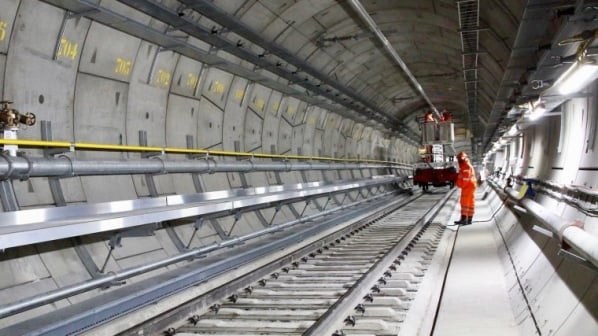With the Department for Transport (DfT) and TfL already allocating £300m to Crossrail Ltd in July, the company will require a further £1.3-1.7bn to complete the underground section of the project. Infrastructure manager Network Rail also received £290m in the summer to complete surface works.
Under the new plan, the Greater London Authority will borrow up to £1.3bn from the DfT and will repay this loan from the existing Business Rate Supplement (BRS) and Mayoral Community Infrastructure Levy (MCIL). The GLA will also provide a £100m cash contribution, taking its total contribution to £1.4bn, which it will provide as a grant to TfL for the Crossrail project.
With the final cost yet to be confirmed, a contingency of up to £750m has been set aside by the DfT in the form of a loan to meet the remaining cost of the project.
The combined financing package will replace the £350m interim deal offered by the government in October.
Crossrail was unable to provide a revised completion date for the project. However, chief executive, Mr Mark Wild, admitted that the company could no longer commit to the revised target of autumn 2019 issued in August. He said his team is working on a “robust and deliverable schedule.”
Two independent reviews of the project commissioned by TfL at the request of the government and conducted by consultancy KPMG are nearing completion and provided the cost increase projection. They will also ensure that the revised schedule and financing projections are robust.
Core elements of the project’s infrastructure are at varying degrees of completion, including stations and the fitting out of the tunnels. The extra funding will meet the costs of this work as well as testing of the new railway’s systems.
The cost of the project was estimated at £15.9bn at the start of work in 2007 and increased to £17.8bn in 2009 before the government took steps to reduce this £14.8bn as part of its 2010 spending review. The cost of the project is now likely to exceed £17bn.
“With London’s population continuing to grow, our priority must be getting this monumental project completed as soon as possible, with Londoners enjoying all the benefits the Elizabeth Line will provide,” Khan says. “This agreement means that, working with TfL and the Government, Crossrail’s new leadership can get the job done.”
New chair
Meanwhile, Khan and Britain’s secretary of state for transport, Mr Chris Grayling, have confirmed Mr Tony Meggs as the new chair of Crossrail Ltd, succeeding Sir Terry Morgan, who resigned on December 5. Meggs will step down from his current role as CEO of the Infrastructure and Projects Authority (IPA).
Former MP Mr Nick Raynsford has also been nominated as deputy chair of the board.
Upon completion the 21km twin-bore tunnels, which will make up the central section of the Elizabeth Line, will increase central London’s rail capacity by 10% and carry more than half a million passengers per day. Class 345 Aventra EMUs supplied by Bombardier that will be deployed on the line are already in service on the surface sections between Liverpool Street and Shenfield, and Paddington and Hayes & Harlington.

